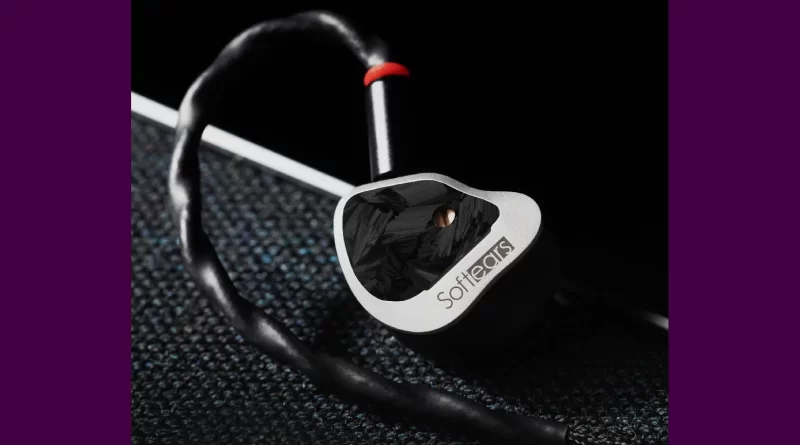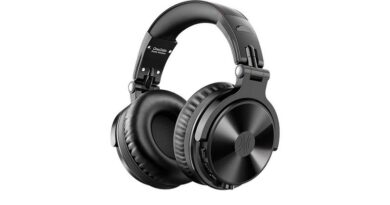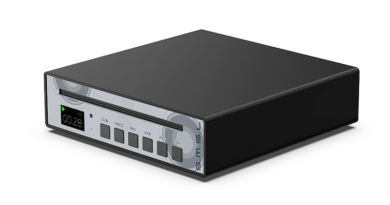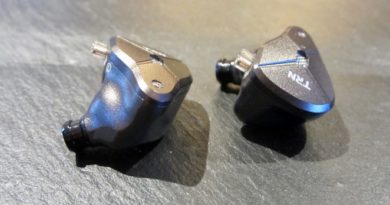Softears Volume S REVIEW – Two Faces, One Soul
While I’m more than familiar with Softear’s mythical Turii model – simply put: close to as good as a single DD IEM can get – for whatever reason I never had a chance yet to assess some of their lower budget models, which is why I was particularly enticed with this opportunity to audition and write about Volume S, a hybrid, mid-low budget (€ 319) model with quite a few interesting features…
In this Article
At-a-glance Card
| PROs | CONs |
| Remarkably pleasant voicing and timbre | Average layering and detail retrieval |
| Well-textured, musical bass | Somewhat restrained dynamics |
| Low Impedance mode: well-balanced, cohesive tuning | High Impedance mode: treble can be too aggressive |
| Excellent cable, and its modular system | Low Impedance mode: lacks top-end extension and air |
| Lush accessories package | |
| Strong value for money |
Full Device Card
Test setup and preliminary notes
Sources: Chord Mojo 2 / E1DA 9038D, 9038SG3 / Questyle QP1R, QP2R, CMA-400i / Sony WM-1A – Stock silicon tips – Stock cable – lossless 16-24/44.1-192 FLAC + DSD 64/128/256 tracks.
I am not writing these articles to help manufacturers promote their products, even less I’m expecting or even accepting compensation when I do. I’m writing exclusively to share my fun – and sometimes my disappointment – about gear that I happen to buy, borrow or somehow receive for audition.
Another crucial fact to note is that I have very sided and circumscribed musical tastes: I almost exclusively listen to jazz, and even more particularly to the strains of post bop, modal, hard bop and avantgarde which developed from the late ’50ies to the late ’70ies. In audio-related terms this implies that I mostly listen to musical situations featuring small or even very small groups playing acoustic instruments, on not big stages.
One of the first direct consequences of the above is that you should not expect me to provide broad information about how a certain product fares with many different musical genres. Oppositely, you should always keep in mind that – different gear treating digital and analog sound in different ways – my evaluations may not, in full or in part, be applicable to your preferred musical genre.
Another consequence is that I build my digital library by painstakingly cherry-pick editions offering the least possible compression and pumped loudness, and the most extended dynamic range. This alone, by the way, makes common music streaming services pretty much useless for me, as they offer almost exclusively the polar opposite. And, again by the way, quite a few of the editions in my library are monoaural.
Additionally: my library includes a significant number of unedited, very high sample rate re-digitisations of vinyl or open-reel tape editions, either dating back to the original day or more recently reissued under specialised labels e.g. Blue Note Tone Poet, Music Matters, Esoteric Jp, Analogue Productions, Impulse! Originals, and such. Oppositely, I could ever find an extremely small number of audible (for my preferences) SACD editions.
For my direct and conclusive experience, virtually none of the above is available on the most common streaming platforms, which makes their offering of high sampling material apriori pointless for my purposes. Quite simply, then, I don’t use streaming services as I find them not up to my requested quality.
My source gear is on its turn selected to grant very extended bandwidth, high reconstruction proweness, uncolored amping. Which in particularly means that TWS and any other form of lossless-based wireless gear is apriori off my selection panel.
And finally, my preferred drivers (ear or headphones) are first and foremost supposed to feature solid note-body timbre, and an as magically centered compromise between fine detail, articulated texturing and microdynamics as their designers can possibly achieve.
In terms of presentation, for IEMs I prefer one in the shape of a DF curve, with some very moderate extra pushup in the midbass. Extra sub-bass enhancement is totally optional, and solely welcome if seriously well controlled. Last octave treble is also welcome from whomever is really able to turn that into further spatial drawing upgrade, all others please abstain.
Signature analysis
Dual tuning
When it comes to versatility, the Softears Volume S offer dual tuning options via an integrated switch mechanism. By turning a small recessed dial on the housing—using the supplied “screwdriver” tool—you can toggle between two distinct tuning profiles: so-called Low Impedance and High Impedance modes.
Turning the switch counterclockwise engages the Low Impedance mode, while the clockwise position activates the High Impedance tuning. Each setting subtly transforms the sonic profile of the IEM, providing two flavours to suit different tastes or genres…
Low Impedance Mode
Tonality here leans toward a well-balanced U-shape, with a clear focus on musicality over surgical precision. If I had to sum it up in a single phrase: “Soulful and sweet, with a nod to detail.”
Timbre is gently warm, full-bodied, and slightly soft, but not smeared. Softears didn’t try to “hide” the differences between the dynamic and BA drivers—instead, they seem to embrace each driver’s natural character and blend them in a way that recalls a perfectly dressed Eggplant Caponata: different flavors in harmony, without masking each other.
- Bass: Textured and powerful, although not ultra-punchy. Midbass can occasionally get a bit fluffy and verge on masking the lower mids, which introduces some imaging uncertainty, but it never truly muddies the sound.
- Mids: Clean and natural, arguably the highlight of this mode. Some might crave more upper mid energy, but what’s here is tastefully rendered.
- Treble: Tamed and inoffensive. Presence is somewhat understated and brilliance/air is limited, which affects the sense of openness but also reduces fatigue significantly.
Overall, this mode is a pleasure to listen to for extended sessions—smooth, cozy, and especially suitable for genres like pop, prog rock, and singer-songwriter material.
Warning: If you’re after high-level layering, microdetail retrieval, or dynamic contrasts, this isn’t your choice.
High Impedance Mode
Switching to the High Impedance mode brings a notable V-shaped tuning, with a marked boost in treble energy.
- Bass: Remains extended and textured, although the shift in the balance makes it feel like it’s playing a supporting role. Cleaner and snappier than in Low Impedance mode.
- Treble: Elevated—perhaps too much so in certain tracks. When the upper frequencies dominate, they can become excessive and borderline splashy, impacting overall coherence.
- Imaging & Resolution: Generally improved over Low Impedance mode, except when treble goes into overdrive, which can blur detail.
- Soundstage: Surprisingly, more intimate. Layering and microdetail are slightly better, but not dramatically so.
This mode might appeal more to trebleheads or those looking for a more “exciting” presentation—but be warned: treble tolerance is key here.
Warning: Treble can overwhelm; not ideal for treble-sensitive ears.
Tips Rolling
Out of the box, Volume S B-type tips (dark grey) provide a neutral and comfortable listening experience. I found them ideal for Low Impedance tuning. For High Impedance mode, I didn’t enjoy either supplied tip—JVC Spiraldots turned out to be the better choice, helping to tame the sharp treble peaks without sacrificing too much energy.
Physicals
Build & Fit
While not particularly lightweight, the Volume S housings are large yet ergonomically efficient. Thanks to their long nozzles, they achieve a deep and stable fit that keeps the larger body clear from the concha, thus minimizing fatigue during long sessions. Comfort, at least in my case, is excellent.
The switching tool deserves a mention—it’s well-designed and works flawlessly, but you’d be wise not to lose it. The shape is quite specific, and finding a generic alternative might be tricky (though a fine watch screwdriver might do the trick).
Cable & Accessories
A rare highlight in this price range, the included cable is one of the best I’ve encountered in a stock package. The material feels high-end, haptics are great, and the modular terminations are functional and stylish.
The overall packaging also punches above its weight class. The case is a bit bulky, but it’s made from quality materials and offers a luxurious tactile impression, especially compared to the often-spartan inclusions in similarly priced Chi-Fi offerings.
Specifications (declared)
| Housing | Medical-grade resin + aluminium alloy + carbon fibre. Mechanical dial for impedance-based tuning |
| Driver(s) | 10mm silicon diaphragm dynamic driver + 6mm wool paper diaphragm passive dynamic driver + 2 banalced armature drivers |
| Connector | 2pin 0.78mm |
| Cable | 1.2m oxygen-free copper braided paracord cable, with modular termination. 3.5mm and 4.4mm terminals supplied. |
| Sensitivity | Low Imp: 114dB/V = 99dB/mW High Imp: 124dB/V = 104dB/mW |
| Impedance | Low: 9.8 Ω High: 31,2 Ω |
| Frequency Range | 8-40KHz |
| Bundle & accessories | Leather sturdy carrying case, one set (S/M/L) of Softears B-type (neutral) eartips, and one set (S/M/L) of Softears UC-type (brighter) eartips, mode switch tool |
| MSRP at this post time | € 319,00 in EU |
Considerations & conclusions
The Softears Volume S deliver two clearly distinct personalities in one well-crafted product. Low Impedance mode caters to musicality lovers, while High Impedance offers a livelier, more resolving presentation—albeit one that may be too hot up top for some.
When paired with their impressive build, premium accessories, and reasonable price point, they offer excellent value in the hybrid IEM market.
Our generic standard disclaimer.







